MICHIGAN CITY, Ind. – The path of projects and city’s prosperity, stemming from downtown development and the South Shore Train Station, were at the core of the conversation during the Michigan City Chamber of Commerce’s Economic Update.
Panelists Economic Development Corporation Michigan City Executive Director Clarence L. Hulse and Michigan City Director of Redevelopment Skyler York centered on updates, momentum and what is next for the city.
The newly constructed South Shore Train Station – Double Track Project continues to spark inquiries and new projects. This development includes a new parking garage and renovated train station along with the adjacent The Franklin at 11th Street – a 12-story, mixed-use multi-family development.
“Having the Double Track improvements across the whole region, and the 11th Street multiple-level development adjacent to the train station, has created a lot of attention. We are able to leverage new dollars for incentives,” Hulse said. “This is a signal to developers, businesses and investors across Chicagoland, Indiana and Southwest Michigan that we can do large projects and want to do business.”
“When we first looked at the train station it was just a garage – worth millions of dollars – but then we pushed it to be a joint transit-oriented development that is the only one in the state,” York said. “Where we were always looking out at what other places were doing, now they are looking at us and asking: ‘How are you doing this?’ It’s an interesting shift that they are asking us questions.”
York said that the new train station has spurred a different view of downtown and has continued to lay the groundwork for more opportunities.
“The train station has expanded what we think of as downtown – it once ended at 11th Street – now there is a whole other piece south of that – all the way to Ames Field.
“The downtown plaza at 7th & Franklin Street allows for additional activities and more business space as the area has been electrified. It’s completely wired for more ways to utilize the space, including the upcoming movies at the plaza and block party around the boat races. The Kidpreneur program was really the first to use this space.”
The first Designated Alcohol Refreshment Area in the city runs from the beach to 11th Street and is a component of the downtown changes.
“This allows local businesses and restaurants to serve you a drink in a cup, and you are allowed to walk around downtown. With area events, you can walk around with a glass of wine, beer or mixed drink,” York said.
“Downtown is the face of every community. When I arrived 12 years ago, the city and leaders understood the importance of redeveloping its downtown to drive progress throughout the city,” Hulse added.
Key projects are in various stages of the development process, including plans for over 1,000 apartments and a grocery store at 5th and Pine streets, the State Prison feasibility study and redevelopment, SoLa and new housing city wide.
“The State Prison Reimagination study has a lot going on behind the scenes. There are ideas for a small retail village, recreation lodge and single and multi-family units. In the next year, we will look at input and proposals as the analysis continues on what’s next for the space,” Hulse said.
“SoLa is a very large project, and there is a tight timeline as nontraditional lending is being explored. The project has benchmarks to hit, and tools are in motion to allow that project to reach the finish line,” York said.
The Tryon Meadows housing development is moving through the stages of the development process, with the first phase being the largest to include townhomes and single-family units. “Singing Sands Suites” is a workforce housing initiative with 300 family styled apartments planned. This is in the initial stages for modular structure units on what was once a Brownfields site.
“Tryon Meadows is a blend of home styles that is a trend in development: with townhomes, apartments and single-family homes in one space. There will be new infrastructure with sidewalks, roads and green spaces,” York said.
“’Singing Sands’ is an amazing story to tell as it is part of the EPA Brownfields Assessment program. We are putting the property back to use after working on the process for more than 10 years. Modular has come a very long way and can be built efficiently and put up in record time.”
Hulse and York understand that momentum and public confidence can waver when project timelines shift but encourage community members to focus on what has been accomplished.
“Keeping momentum is always the question … we want resident to see what is getting done in downtown with the new two-way street, cleanliness, murals and small businesses investing in the area,” Hulse said.
“We are also focusing on neighborhoods with the Vibrant Michigan City initiative and Neighborhood Leadership Academy,” York said. “We are teaching and inspiring leaders to help make their neighborhoods stronger and want them to start telling us what they need … instead of us telling them.”
Community members and small businesses should stay engaged to sustain the synergy that is sparked by all the new developments and projects, Hulse said.
“It’s an exciting period for Michigan City,” he said. “We encourage all of you to be a part of it, be engaged and get involved. It takes everybody to make these things happen.”

